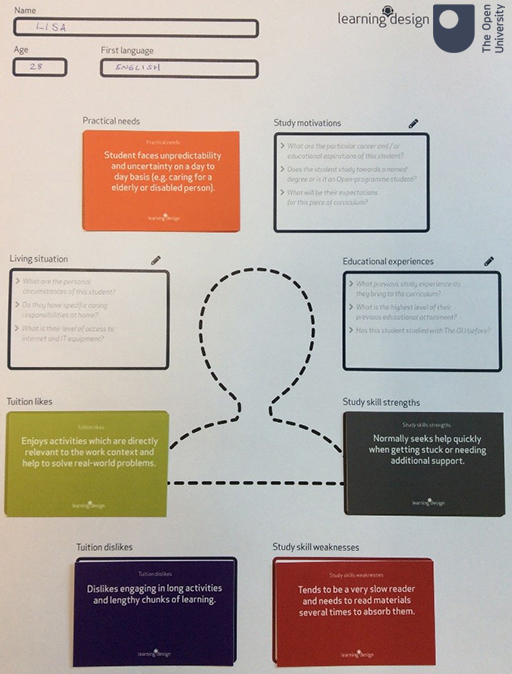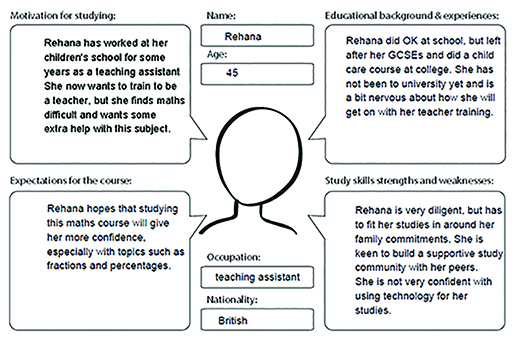3.1 Creating a student profile
If you have a wide audience, such as the audience for this badged open course, you might need to consider a range of student characteristics to ensure that you cater for different learning styles and backgrounds of students. One way to achieve this is by creating some fictional examples of student profiles (see Figure 6).
Here, in Figure 7, is a profile that has been created for an adult distance learning student:
The example student profile above explains a fictional student called Rehana. Rehana is British, 45 years old and is an adult distance learning student. She works as a teaching assistant alongside her studies. Rehana’s motivations for studying builds upon her experience as a teaching assistant at her children’s school where she has worked for several years. She now wants to train to be a qualified teacher but she finds maths difficult and wants some extra help with this subject.
Rehana’s educational background and experiences explain that she did OK at school but left after her GCSEs to do a child care course at college. She has not been to university yet and feels nervous about how she will get on with teacher training. Rehana’s profile regarding study skills (both strengths and weaknesses) are that she is a very diligent student. However, she had to fit her studies in around her family commitments. She is keen to build a supportive study community with her peers. She is also not very confident with using technology for her studies. Rehana’s expectations for the course are that she hopes the studying will give her more confidence in maths: especially with topics such as fractions and percentages.
There may be additional points to include in the design features, such as:
- Rehana is keen to link up with her peers to form a learning community, so it is important to look for ways to introduce her to other students at an early stage in the course.
- Rehana is not very confident with maths, so she needs to have a gentle introduction to this topic and build up gradually, offering additional support along the way. This might be a tricky topic for her, so a needs analysis would help to identify the specific interventions that would help her to overcome the stumbling blocks.
- Rehana is new to online study so she would benefit from some help to navigate her way around the learning materials – perhaps via an early tutorial session.
Activity 2 Identifying and reflecting on student profiles
Examine Figure 7 and these additional points to include in the design features. What other issues can you think of either for Rehana or for your own student profile?
Think carefully about your own experiences or the issues that your students have. Write them down now and use them in Activity 3.


